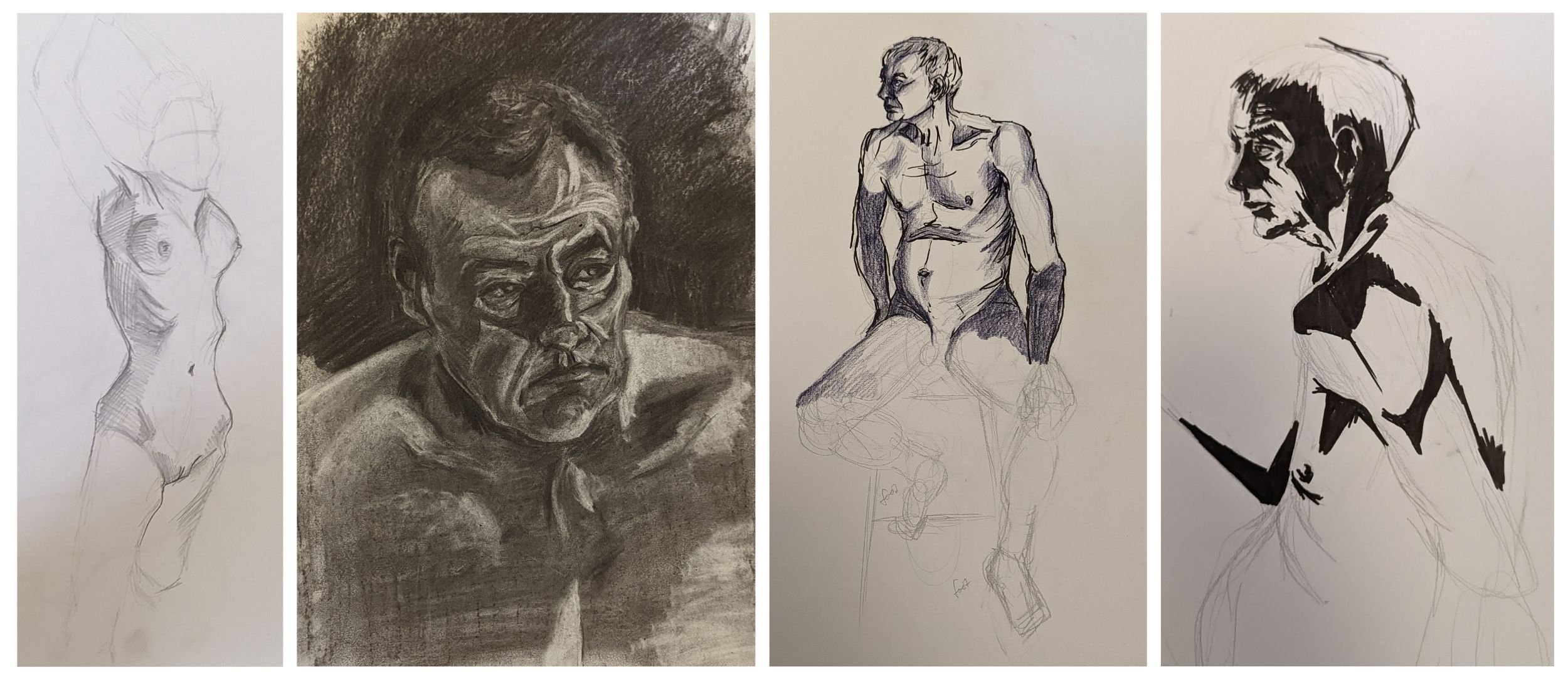What to expect from a Life Drawing class
Curious about life drawing? This art form has been a cornerstone of artistic practice for centuries, and for good reason. It’s not just about drawing the human body- it’s about understanding form, proportion, and movement, all while honing your observation skills.
A life drawing class offers a unique opportunity to study and draw from a nude body. It’s not a sexualised or awkward experinece, and many students comment on how interesting and meditative they find the classes.
Life drawing has been a valued part of an artists’ practice for centuries.
A typical class
In a typical life drawing class, you’ll find a calm and focused atmosphere. The session revolves around a nude model who poses at the centre of the room, surrounded by students at easels. As the tutor, I’ll circulate to offer 1-to-1 guidance and constructive feedback to help you reflect on your work and improve.
The class usually begins with short, timed poses- lasting just a few minutes- to encourage loose, expressive sketching. As the session progresses, the poses lengthen, allowing for more detailed studies. You might notice the model shifting to seated or reclined poses for comfort, especially during longer intervals.
Your work
You’ll need to bring supplies that you want to sketch with. I often recommend charcoal as it’s forgiving and quick to work with. You’ll need to bring lots of paper that’s at least A3 size- you might create as many as 10-15 drawings in one session!
Some students like working on their iPads to create digital drawings. I’d personally recommend still making time to do some physical drawings too in each session, but this is something to discuss with your tutor.
Please don’t come in to the class expecting to create a masterpiece every time. It’s important to recognise that life drawing is an exercise to improve your observation and drawing skills. This means that producing less-than-perfect drawings is completely normal! As with any skill, you’ll notice steady improvements over time as you contine a regular life drawing practice.
A few important notes on etiquette:
No phones or photos. Respect the model’s privacy.
Knock and wait for permission before entering if a class is in session (there will usually be signs on the door).
Quiet focus. While not a silent class, the atmosphere is meditative. If you listen to music, ensure it is very quiet and doesn’t disturb others.
Respectful behaviour. Comments about the model’s appearance should always be professional- focus on the lines, form, and artistry of the human figure.
Life drawing can feel daunting at first, but it’s a deeply rewarding experience. You’ll learn to see the human body in new ways, translating its beauty and complexity onto paper. Whether you’re here to improve your skills or simply enjoy the process, I look forward to welcoming you to this timeless artistic practice.


